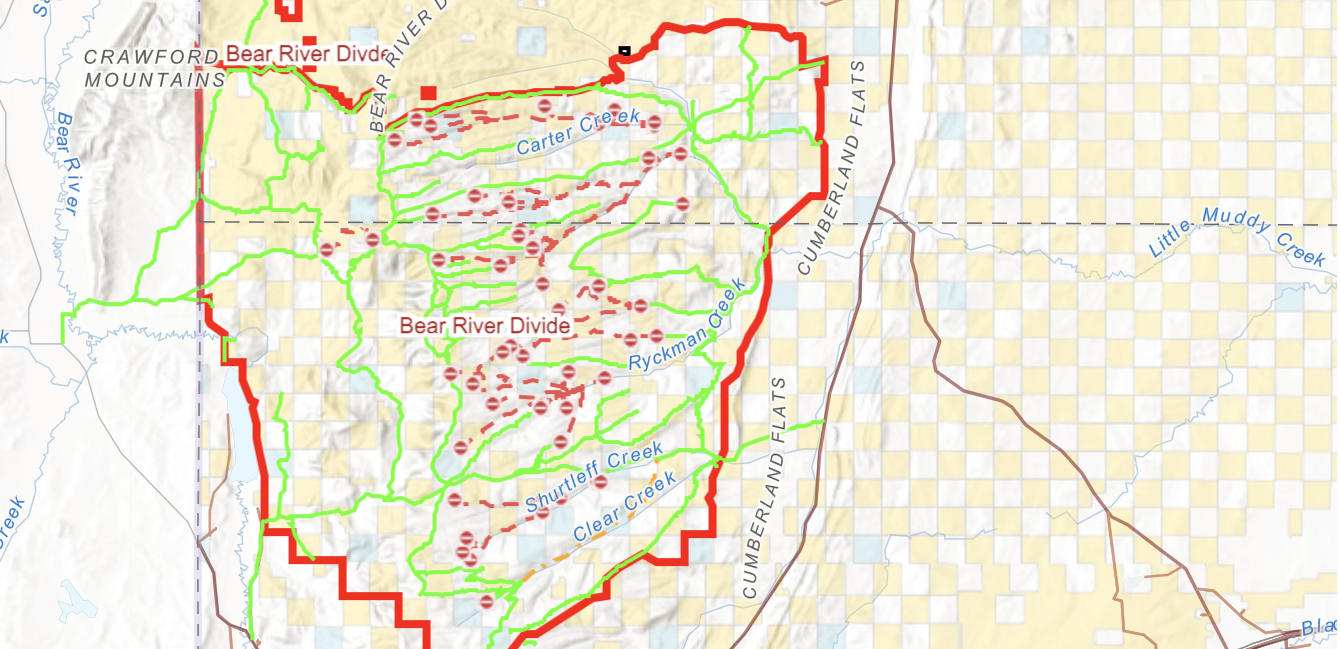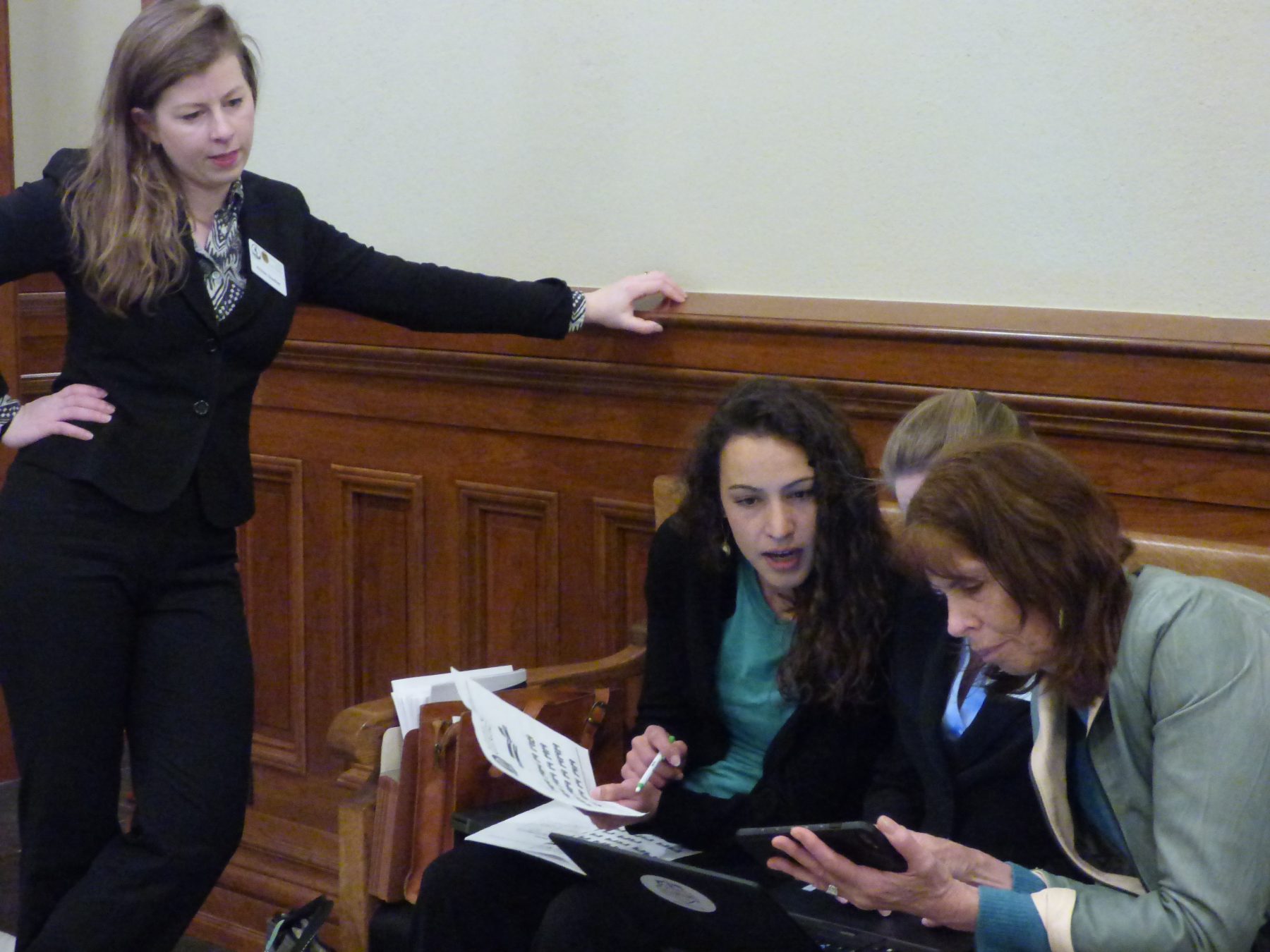The following blog post was written by Shane Heavin, our 2022 summer migration policy and outreach intern.
What would it feel like to stand in front of the Wyoming Game and Fish Commission and ask them to spend $2 million to create access to public lands that are landlocked by private land? As an intern for the Wyoming Outdoor Council, I did just that. And I’m here to tell you it’s not as scary as it sounds.
The Wyoming Game and Fish Department recently made a deal with Uinta Livestock Grazing Partnership, Belle Butte Grazing Partnership, and Bear River Land and Grazing to lease approximately 91,760 acres of private lands bordering roughly 110,000 acres of public lands. The payout will be $400,000 per year for five years and will also lock in public access to the private land for an additional 25 years, ensuring 30 years of public access to public lands inside the Bear River Divide Hunter Management Area. WOC favors this deal as it provides access to public lands, and public lands are what WOC is all about. The Outdoor Council’s long history of public lands advocacy is why I spoke to the commission in support of the Bear River HMA project.
Game and Fish makes it simple to give public comments at a meeting, and there are two ways to sign up to testify. The first is to fill out an electronic form regarding the topic you want to discuss while attending the meeting via Zoom. The second way is to fill out the same document on paper while signing in to attend the meeting in person. You do not have to tell the Game and Fish Commission whether you agree or disagree with the WGFD on the subject or specifically what you want to say, just that you have an opinion you want them to hear.
My supervisor, WOC’s program director, Kristen Gunther, introduced me to WGFD personnel Sean Bibbey, who is knowledgeable about this topic and has put tremendous work into making the Bear River project a reality. I was allowed to ask questions about the undertaking and given complete information about the Bear River HMA project. This made it easy to better understand the issue and write an informed testimony to present to the commission.
The last pieces of the puzzle to effectively speaking to an authoritative group are moral support and building relationships. Moral support and building relationships are among the most significant factors in effectively addressing an audience. Kristen introduced me to several employees of the WGFD and other experts so that I could learn as much as possible about the Bear River HMA project. Kristen also helped me edit my testimony to ensure it was clear and competent. Again, the point of the testimony is not to agree or disagree with WGFD’s position but to effectively convey the interests of the Wyoming Outdoor Council.
Kristen provided moral support by going with me to meet key members of the Bear River HMA project and was present when I testified in front of the Game and Fish Commission in support of the Bear River HMA. Kristen’s moral support also allowed me to build relationships with WGFD staff that will last well into the future. The fantastic thing about these relationships is that the people you have formed them with will also provide moral support once established. Relationships are like a snowballing effect into moral support. I am not saying that people will always agree with you, but they will want the best for you and sometimes point out things you do not see or understand that may change your point of view.
In this case, attending preceding WGFD events and meetings was a critical part of relationship building. Speaking with WGFD personnel about the subject you are interested in shows them that you are willing to put in the work to research the topic and listen to their point of view. For example, I attended all three days of July’s Game and Fish Commission meeting. Daily attendance allowed me to become more familiar with the commission members and also allowed me to meet some of the commissioners before I had to speak in front of them.
“Speaking with WGFD personnel about the subject you are interested in shows them that you are willing to put in the work to research the topic and listen to their point of view.”
— SHANE HEAVIN, migration policy and outreach intern
Studying the Bear River HMA project materials, speaking with the WGFD about the project, attending many Game and Fish meetings, and having Kristen’s support gave me the confidence I needed to convey WOC’s interest to the Wyoming Game and Fish Commission.
And so, on July 19, I gave testimony to the Wyoming Game and Fish Commission. I thanked the WGFD, Uinta Livestock Grazing Partnership, Belle Butte Grazing Partnership, and Bear River Land and Grazing for the work they did on this project. I also asked them to approve WGFD’s request to spend $2 million to ensure public access to public lands inside the Bear River HMA. Whether or not my testimony had any effect on the outcome, I do not know. What I do know is that the Wyoming Outdoor Council gave me the confidence I needed to testify and that my voice was heard. If my voice can be heard, so can yours.
By the way, the Wyoming Game and Fish Commission unanimously passed the request to lease public access to the Bear River HMA.



